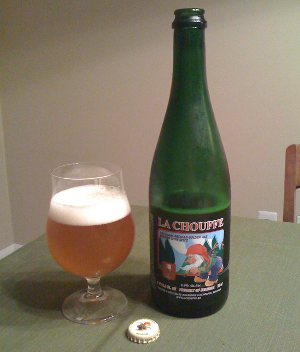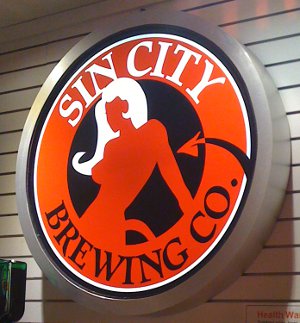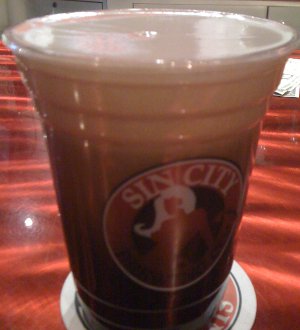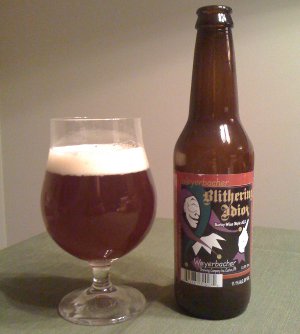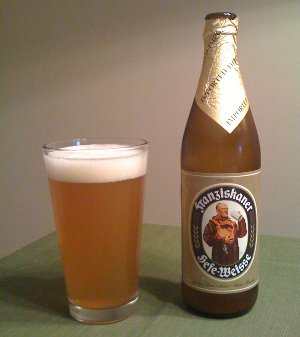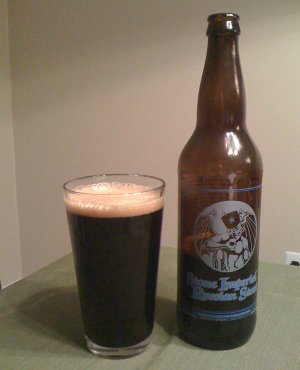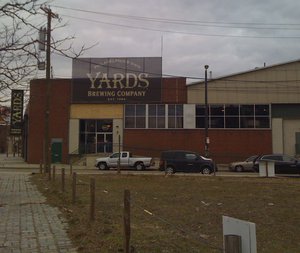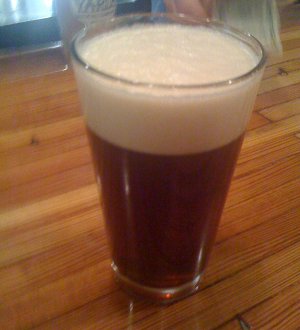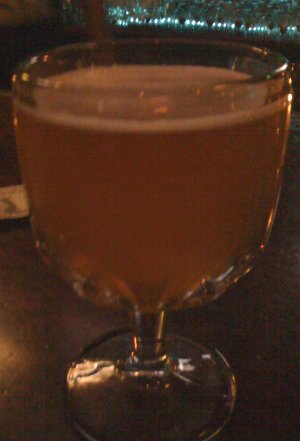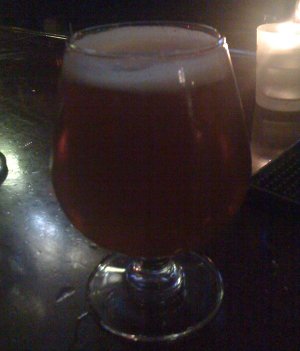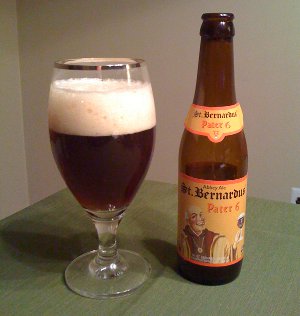I have to admit that I have really grown to love the concept of a double feature. So far, I’ve generally used the opportunity to compare two beers of similar style to see how different they can be (not to mention, which is better). I feel like I’m getting better at evaluating beer, but I still really appreciate the opportunity to compare two beers of similar style, one after the other. It’s something you don’t see much. For instance, you rarely, if ever, see any sort of comparative notes on Beer Advocate or Rate Beer. I always found this strange. It would be much more helpful if you could tell me how a given beer differs from a standard or, at least, common version of a beer.
Noted beer scribe Andy Crouch has recently lamented the state of beer writing, citing the common reliance on tasting notes as a crutch that are uninteresting. I can see how one person’s subjective evaluation of beer at a micro level could get tiresome, and indeed, much of the beer blogosphere is focused on that sort of thing. In the Aleheads’ most recent All Beers Considered podcast, they discussed how boring a tasting notes sorta post could be, noting that they try to avoid such things. And yeah, I can see how that could strike some folks as being boring, especially if the review is solely based on one person’s opinions.
When I started this blog, I didn’t really want to fall back on reviews or tasting notes, but I almost immediately settled into exactly that sort of post. I think this is perhaps due to my tendency to blog for my own benefit, as opposed to what other people will want to read. This is no doubt why I have, like, 2 regular readers (if that). But as usual, my pattern of long-winded online writing has taken hold. Lately, I’ve been trying to be more interesting with what I write, even if it almost always culminates with tasting notes. Writing a review is easy, but being interesting and providing more information about the beer, the history of the style, or whatever, is more difficult, and I seem to have started to provide more context about the beers I’m writing about.
I always tried to spice things up with my other passion, movies. But I’m sure most beer blog readers don’t really care much about that, unless I get ambitious and come up with a screenplay post. Still, I hope that my recent writing has been more enjoyable. I also hope that these double feature posts, with comparative reviews of similar styles, are considered more helpful and interesting than a simple tasting note.
And tonight, I have a particularly interesting double feature. I didn’t watch two movies (as I often do), but I was switching back and forth between the Flyers game (we clinched a playoff spot tonight) and the NCAA Wrestling championships (college wrestling is rarely televised, so this was a welcome surprise). On the beer front, I tried two tripels I’ve been meaning to drink for a few months now. I always find it interesting when a single brewery releases multiple beers of the same style. When it comes to a style with a wide variation in flavors, like an IPA, it certainly makes sense. But for more narrow styles, like, for example, a Belgian style dubbel or tripel, there seems to be less room for variation. That being said, when I got my hands on a variety pack featuring 6 different St. Bernardus beers, I noticed that there were two dubbels and two tripels. The dubbels turned out to be interesting – one was a lot lighter than I was accustomed to, and the other was more of a standard dubbel. Both were great. And tonight, I’ve got two tripels for you.
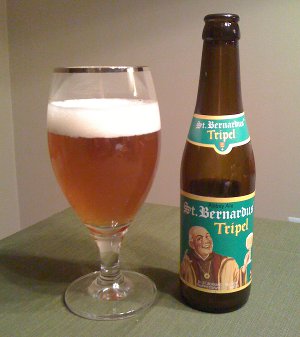
St. Bernardus Tripel – The standard version seems to be quite popular, and this is the one that is more widely available as well. This is evidenced by the fact that his beer has 951 reviews on Beer Advocate, while the Watau tripel has only 217 reviews. This beer is a slightly hazy gold color with ample head and minor lacing as I drink. Smells of spicy belgian yeast (typical cloves and bananas smell) with a little fruity alcohol peeking through. The taste is fantastic – spicy and sweet with just a hint of sticky alcohol in the finish. Some fruitiness apparent as well, and that sticky sweetness lingers, especially as the beer warms up. High carbonation and full body with a bit of a harsh mouthfeel, but still extremely drinkable. Dangerously drinkable for such a high alcohol beer (even though 8% is relatively low for a tripel). That being said, I don’t think it really contends strongly for a favorite tripel – though it’s certainly a solid example of the style and something I can’t imagine turning down. A-
Beer Nerd Details: 8% ABV bottled (330 ml). Drank from a goblet.
Palate cleansed with a single UTZ pretzel rod.
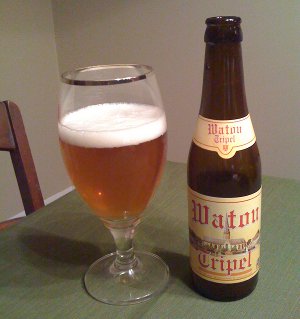
St. Bernardus Watau Tripel – The less commonly seen version of the two beers, this version is named after the village of Watou in West Flanders, Belgium (where the beer is brewed, natch). Indeed, I’ve seen the St. Bernardus brewers labeled the “Wizards of Watau”, which seems fitting given the quality of their beer. When I first got a hold of this, I searched around for some descriptions of what the difference was between this and the standard Tripel, but alas, I found very little on that front, which is a big part of why I wanted to do this as a double feature. Pours a slightly lighter, but still golden color. I want to say it’s less hazy, but that might just be because of the color. Less prominent in the way of head and lacing. Smells more intense than the regular Tripel though. Along with the standard Belgian yeast aromas, there is perhaps more fruitiness apparent here as well. Again, taste is fantastic, though similar to the regular Tripel. I think the main difference is that there’s more fruitiness here, and less sticky alcohol (which is a welcome development). There’s some additional complexity and maybe even some funkiness that isn’t present in the regular offering. The body seems fuller as well, and this is actually more drinkable. The ABV is actually less than the standard Tripel, so I’m not surprised that it’s more drinkable, but I am surprised that I like the flavor more – usually I associate higher ABV with more intense flavors, but not in this case. The differences are subtle, but I actually think this one is better than the regular St. Bernardus offering and it could even rival my favorites. A
Beer Nerd Details: 7.5% ABV bottled (330 ml). Drank from a goblet.
There’s less variation between the two than there were between the the St. Bernardus 6 and 8 versions of the dubbel, but I think the Watau is the clear winner. The differences are subtle enough that I can see why folks who don’t drink them back to back don’t offer much comparison between the two, but drinking them back to back made it clear to me.
